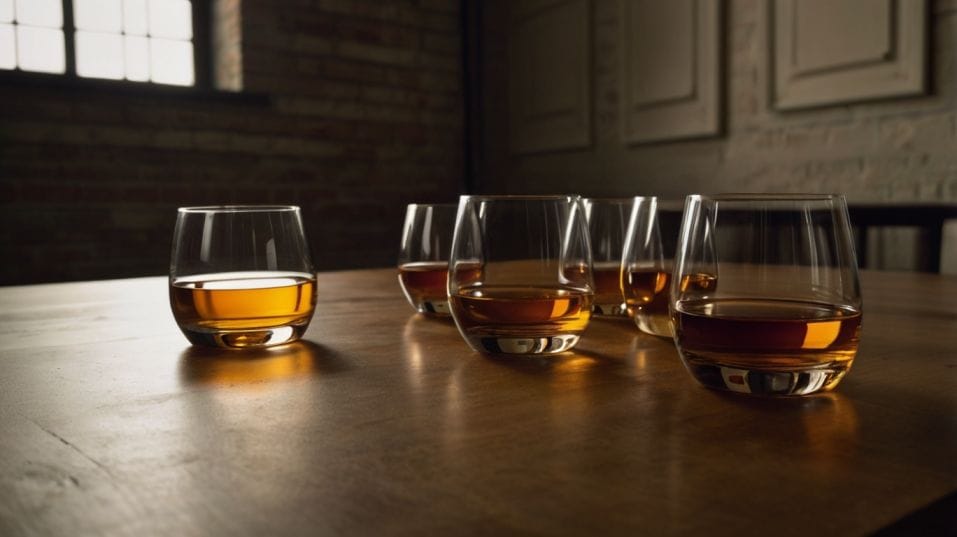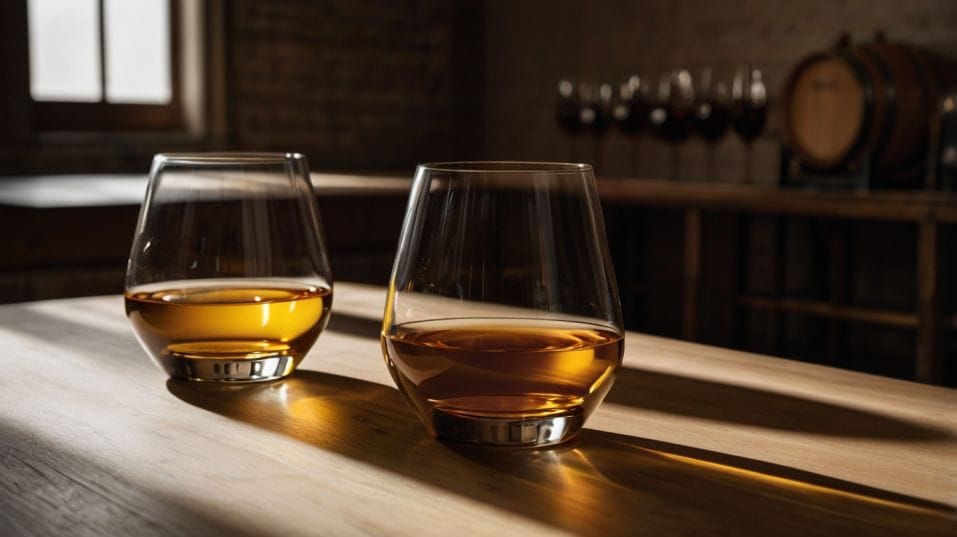Scottish Regions: A Tasting Tour
Unlock whiskey wisdom by tasting Scotland’s regions with purpose. Build real skill, not hype—one pour, one region, one lesson at a time.

What if the best way to learn whiskey isn’t by memorizing brands or chasing big flavors—but by training your palate, one region at a time?
Scotland’s whiskey map isn’t just a tradition; it’s a tasting toolkit. Each region builds a different sensory skill, from feeling texture to sensing finish.
Whether you're just getting started or looking to sharpen your instincts, this guide shows how to taste with purpose—not just preference.
Lowlands: Precision Over Power
The Lowlands are often the last stop for casual drinkers and the first stop for serious ones. That’s because this region strips whiskey down to the basics—delicate florals, fresh grain, subtle citrus, and soft vanilla.
Nothing to hide behind. If you can’t taste the difference between a young Lowlander and a grain whisky, your palate isn’t broken—it’s just not trained yet.
Lowland malts teach you the discipline of quiet flavors. When you sip one, you’re learning how to identify texture without weight, sweetness without syrup, and complexity without volume. It’s about restraint.
How to taste it smarter: Use a narrow glass to focus the nose—Lowlands won’t shout. Let the whiskey sit for a few minutes before sipping, and resist the urge to “look for” notes.
Instead, ask yourself: What’s actually here? What’s missing? What does that silence mean?
If you're building a collection, a good Lowland bottle forces you to slow down. And that’s the whole point—calibrating your senses, one light, structured dram at a time.

Highlands: The Study of Texture
The Highlands aren’t one region—they’re many moods stitched together by geography.
Northern distilleries often deliver minerality and cereal notes, while southern and western Highland whiskies lean richer, oilier, with more spice and dried fruit. There’s no single Highland style, and that’s exactly why it’s essential to explore.
These whiskies train you to feel. Literally. Texture becomes your lens. Is the spirit waxy? Drying? Creamy? Does it hang around the gums or vanish clean? The flavors are a bonus. The mouthfeel is the lesson.
Why it matters for collecting: Texture tells you how a whiskey will age. Oily spirits evolve better in the bottle and cask. Dry, brittle ones? Less so. Learn to feel the whiskey before chasing age statements or packaging.
How to taste it smarter: Taste two Highland malts from different subregions—north and central, coastal and inland. Keep the setting the same.
Glassware, water, rest time. Then focus only on the feel. Don’t even write down notes. Just register weight, finish, and grip. That’s how you train for collecting and aging decisions.
Speyside: The Art of Control
Speyside gets pitched as “accessible” and “balanced”—but that’s only the surface. This region is where cask management becomes craft.
It’s where you start seeing the difference between balance and boredom, between complexity and clutter. Speyside whiskies often lean into orchard fruit, honey, toasted nuts, baking spice—but the real story is in how the flavors are arranged.
A great Speysider doesn’t overwhelm. It reveals. Over time. Layer by layer. This is the region that teaches you how to appreciate subtle shifts between sweetness and spice, oak and malt, aroma and aftertaste.
Want to collect smart? Learn to judge finish quality. Speyside gives you clean examples of short vs. long, linear vs. evolving.
That’s more important than chasing limited releases or single casks. If you can taste how a whiskey finishes, you can predict how it plays with food, how it might age, and what mood it fits.
How to taste it smarter: Leave your pour for ten minutes before drinking. Then smell it with your mouth slightly open. You’ll catch secondary aromas that aren’t obvious at first—dried flower, biscuit, fresh pear.
Take a second sip and track whether the sweetness grows or fades. That dynamic is the hallmark of expert blending.
Islay: Power and Precision
Everyone thinks they know Islay: smoke, peat, ocean. But most drinkers stop at the obvious. Peat isn’t a flavor—it’s a delivery system. And Islay teaches you how to taste through it, not just react to it.
This region forces you to develop palate stamina. Not just to endure intensity, but to track what happens beneath it. Lemon zest. Sea salt. Char. Caramelized barley. Even the kind of smoke matters—is it dry and woody, or damp and mossy?
Why it matters for flavor fluency: Islay trains your brain to separate flavor impact from flavor content.
That’s crucial when tasting cask-strength pours, smoky spirits, or anything high-proof. It’s how you stop getting overwhelmed and start tasting with intent.
How to taste it smarter: Don’t drink your Islay dram first. Always save it for later in a session. Add a few drops of water—not to “mellow it out,” but to split the layers. Track how the smoke moves.
Does it come in early or late? Does it coat your mouth or lift clean? That shape tells you a lot about how the whiskey was made—and how your palate reacts under pressure.
The Islands: Expect the Unexpected
Technically not an official region, but definitely a meaningful one. The Islands—Skye, Orkney, Jura, Arran, Mull—are where things get unpredictable.
You might get peat. You might get honey. You might get salty, grassy, malty, funky, or floral—all in one sip.
Island whiskies challenge your assumptions. They ignore rules. You can’t build a flavor profile for “Island style,” which is why they’re so useful.
Every bottle becomes a test of your flexibility. Can you follow the whiskey where it goes, or are you stuck expecting a certain result?
For tasters and collectors: Island distilleries are where you learn to track cask influence. Pay attention to how ex-bourbon or ex-sherry finishes change the base spirit. These aren’t subtle tweaks. On the Islands, cask impact often runs the show.
How to taste it smarter: Try an Island whiskey side-by-side with an Islay and a Highland. Then close your notebook. Don’t look for differences—look for movement.
What flavor hits first? What lingers? What vanishes? That motion map is how you learn to trust your instincts in blind tastings.
Campbeltown: Where Character Wins
Campbeltown used to be a powerhouse, with over 30 distilleries. Now there are only a few—but they punch well above their weight.
These whiskies are unapologetically funky. Think salt, soot, diesel, damp warehouses, overripe fruit. They’re not trying to impress. They’re trying to taste like themselves.
This is the region that teaches you about soul. You won’t always like the dram. But you’ll never forget it. And that’s the point.
Want to build a collection with depth? Don’t just chase what’s smooth or easy. Find bottles that make you think twice. Campbeltown is where that mindset starts.
How to taste it smarter: Taste once. Wait five minutes. Taste again. Campbeltown whiskies evolve fast in the glass. You’re not just sipping—you’re watching a flavor arc. That’s how you train your palate to anticipate, not just react.
Final Thoughts: Build a Palate That Tells the Truth
Tasting by region isn’t about building trivia knowledge. It’s about learning how whiskey speaks—through clarity, weight, balance, intensity, surprise, and character. Scotland’s regions give you a framework to build real sensory skill.
Skip the collector hype. Focus on skill-building. Explore the quiet complexity of Lowlands. Feel the mouth-coating weight of the Highlands.
Chase the control of Speyside. Test your resolve with Islay. Break patterns with the Islands. Wrestle with the funk of Campbeltown.
Start now. Pull two bottles from different regions. Taste them back-to-back, not to pick a favorite—but to ask why they feel different. That’s how you train. That’s how you grow. That’s how you move from sipping to mastering.




